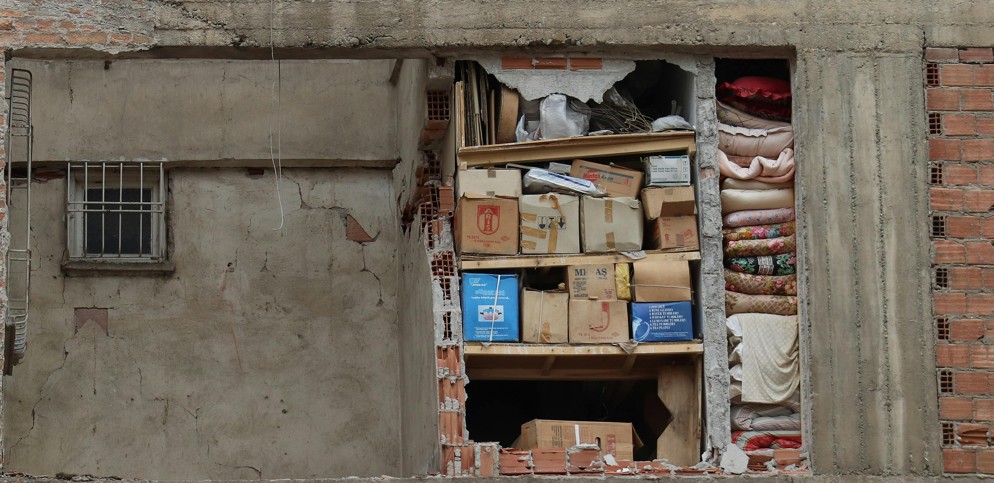You Might Be A Hoarder – Without Even Knowing It

May 07 | 2025

Image by Serkan Gönültaş for Pexels
As the old saying goes…the proof isn’t only in the pudding it’s in your closet, your cupboards, your back porch and – if you have one – your garage.
You’ve got too much stuff. Everywhere. It’s not just a bunch of grandmas building enormous collections of margarine tubs or Uncle Bill’s believe it or not 500 jars of pennies. More and more middle-class households are plagued by overconsumption and even hoarding.
Hoarding? Not Me
Just about everyone I know is struggling to clear out the clutter in their living space. Shopping is easier than ever; click a button or two and anything from the latest bestseller to an oxygen tent will be delivered straight to your door. And, in a culture that fetishizes possessions, why should we be surprised that we’re drowning in stuff?
Clutter is one thing. Hoarding’s a whole other ball of wax.
According to the Mayo Clinic, hoarding disorder is a persistent difficulty discarding belongings, often paired with intense emotional attachments – they’re even irrationally attached to items that others perceive as worthless. Not everyone with a full garage has a diagnosable disorder, many of us are still caught in a cycle of stress-shopping, over-saving, and avoidance.
What’s With Our Stuff Obsession?
Before the current era of rampant over-consumption, hoarding was survival-based. People who lived through the Great Depression learned to hold on to everything from buttons and string to shoe polish, twine, and Christmas wrapping paper. But the post-World War II prosperity boom found happy – and often suburban – families ready to jump into a sparkling world of dishwashers, Chevrolets, clothes, phonographs…you name it. Pride of place was awarded to those who got the most-est, newest things the fastest.
We’re still caught in that loop. Contemporary marketing tells us we need a dozen storage bins, backup phone chargers, and seventeen skincare serums. The result? We’re maxed out on objects but lacking one essential thing: happiness.
The Psychology of Hoarding
Hoarding behaviors are often tied to anxiety, OCD, trauma, and depression. Some people find clutter comforting, soothing. Others hold onto things because they somehow feel they might need them at some point in the future, or can’t withstand the guilt of throwing things away.
Therapy — especially Cognitive Behavioral Therapy (CBT) — can be quite effective. Services like BetterHelp or Talkspace offer accessible, licensed therapy online for hoarding-related issues (and everything else, for that matter). These platforms offer flexible session plans that can help hoarders find mental wellness and support as they go on their decluttering journeys.
What If It’s a Family Member?
Dealing with a parent, spouse, or sibling who hoards can be emotionally exhausting. The key? Compassion over confrontation.
Start by:
- Setting small, achievable goals (e.g., clearing one drawer)
- Focusing on safety, not judgment
- Offering support, not ultimatums
- Recommending therapy or professional help
Randy O. Frost and Gail Steketee’s book Stuff: Compulsive Hoarding and the Meaning of Things is a wonderful source of info and advice. It can help loved ones understand the emotional roots of hoarding.
Decluttering Help: Products & Services That Actually Work
🧹 Home Organization Services
Companies like Clutter — a storage and moving company that offers on-demand pickup, secure storage, and delivery services, makes it easy to manage your belongings through a convenient online platform. The Container Store’s In-Home Organizers or TaskRabbit can also connect you with pros who specialize in decluttering. They’ll help you tackle clutter room-by-room without judgment.
📦 Storage Solutions
Some messes just need better systems. Try:
- iDesign Storage Bins: Clear, stackable, and terrific for kitchen, bathroom, or toy storage
- Open Spaces Entryway Rack: Gorgeous and practical shelving for shoes, bags, or books
- mDesign Drawer Organizers: Help categorize all those “junk drawer” items
Minimalism Isn’t About Living Like A Monk – It’s About Enough
Minimalism doesn’t mean living with three forks and one T-shirt. It’s about intentionality. Shifting from “how much can I get?” to “what do I truly need?” can provide the clarity you need to live with what you actually need…and getting rid of what you don’t.
Start with these:
- Goodbye, Things by Fumio Sasaki: A minimalist guide rooted in real life, not Instagram aesthetics.
- bemorewithless.com blog by Courtney Carver
- The Minimal Mom & Break the Twitch – Trending minimalist-focused YouTube channels
Ready For The One-Week Minimalism Reset?
Take it easy. Breathe deep. And…
- Day 1: Clean out your junk drawer
- Day 2: Donate 10 pieces of clothing
- Day 3: Unsubscribe from marketing emails
- Day 4: Toss expired pantry items
- Day 5: Declutter one bathroom shelf
- Day 6: Set a spending freeze for 24 hours
- Day 7: Reflect — what felt good to let go of?
Bonus Tip: Reward yourself with something non-material—like a walk in a clean, open space.
Final Thoughts
Burnout, marketing pressure, outdated notions of frugality inform modern hoarding. You don’t need to live in a gleaming white box with a futon, a spoon, cup, and plate. You don’t have to go into personal debt investing in organization systems.
All you need to do is take the first step. After all, it’s not about being perfect. It’s about making room for what matters.
- Setting small, achievable goals (e.g., clearing one drawer)
- Focusing on safety, not judgment
- Offering support, not ultimatums
- Recommending therapy or professional help
Randy O. Frost and Gail Steketee’s book Stuff: Compulsive Hoarding and the Meaning of Things is a wonderful source of info and advice. It can help loved ones understand the emotional roots of hoarding.
Decluttering Help: Products & Services That Actually Work
🧹 Home Organization Services
Companies like Clutter — a storage and moving company that offers on-demand pickup, secure storage, and delivery services, makes it easy to manage your belongings through a convenient online platform. The Container Store’s In-Home Organizers or TaskRabbit can also connect you with pros who specialize in decluttering. They’ll help you tackle clutter room-by-room without judgment.
📦 Storage Solutions
Some messes just need better systems. Try:
- iDesign Storage Bins: Clear, stackable, and terrific for kitchen, bathroom, or toy storage
- Open Spaces Entryway Rack: Gorgeous and practical shelving for shoes, bags, or books
- mDesign Drawer Organizers: Help categorize all those “junk drawer” items
Minimalism Isn’t About Living Like A Monk - It’s About Enough
Minimalism doesn’t mean living with three forks and one T-shirt. It’s about intentionality. Shifting from “how much can I get?” to “what do I truly need?” can provide the clarity you need to live with what you actually need...and getting rid of what you don’t.
Start with these:
- Goodbye, Things by Fumio Sasaki: A minimalist guide rooted in real life, not Instagram aesthetics.
- bemorewithless.com blog by Courtney Carver
- The Minimal Mom & Break the Twitch - Trending minimalist-focused YouTube channels
Ready For The One-Week Minimalism Reset?
Take it easy. Breathe deep. And...
- Day 1: Clean out your junk drawer
- Day 2: Donate 10 pieces of clothing
- Day 3: Unsubscribe from marketing emails
- Day 4: Toss expired pantry items
- Day 5: Declutter one bathroom shelf
- Day 6: Set a spending freeze for 24 hours
- Day 7: Reflect — what felt good to let go of?
Bonus Tip: Reward yourself with something non-material—like a walk in a clean, open space.
Final Thoughts
Burnout, marketing pressure, outdated notions of frugality inform modern hoarding. You don’t need to live in a gleaming white box with a futon, a spoon, cup, and plate. You don’t have to go into personal debt investing in organization systems.
All you need to do is take the first step. After all, it’s not about being perfect. It’s about making room for what matters.










